The construction of Tehran‘s Azadi Tower began in 1969 with the aim of becoming a symbol of modern Iran. The opening of this tower in 1971 was part of the 2,500-year celebrations of the Iranian kingdom, and for this reason, this tower was initially named Shahyad, meaning the memorial monument of the Shah. The name was changed to Azadi seven years later during one of the same historical events.
Azadi Tower: A National Symbol
The Azadi Tower of Tehran, also known as the Freedom Tower, is an iconic symbol of rich history of Iran and architectural grandeur. Standing tall and proud in the heart of Tehran, this majestic tower represents the country’s journey towards freedom, progress, and modernity. In this article, we will explore the captivating story behind the Azadi Tower and delve into its significance in shaping the identity of Tehran and Iran as a whole.
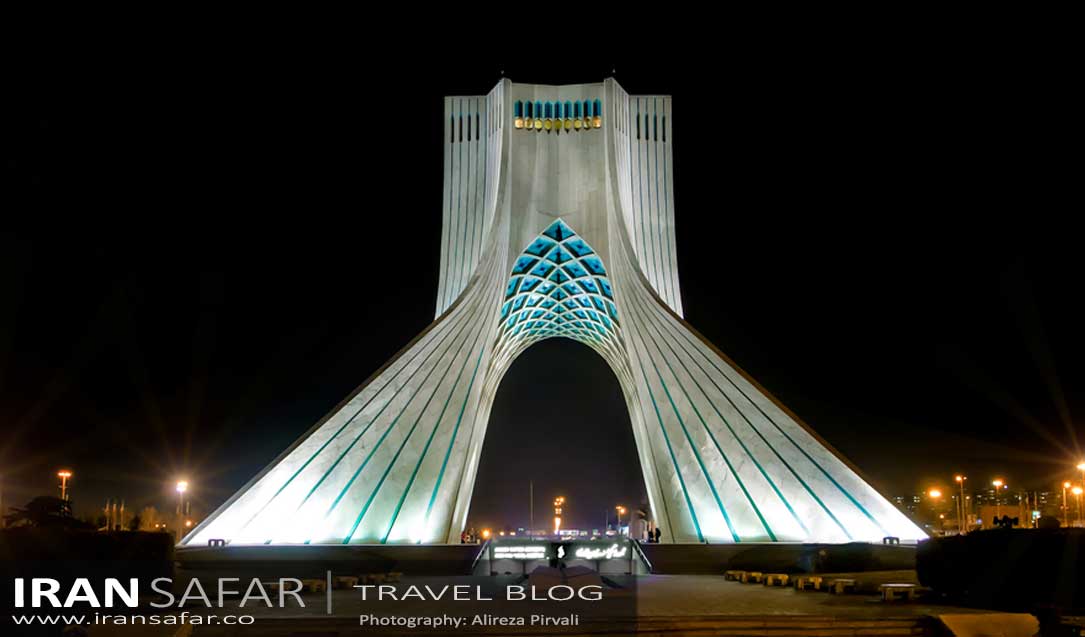 Azadi Tower, Tehran, Iran
Azadi Tower, Tehran, Iran
Also Read : Sa’ad Abad Place Complex
Construction and Purpose
Built in 1971, Azadi Tower, also known as the Freedom Tower, was commissioned to commemorate the 2,500th anniversary of the Persian Empire. The tower was constructed as a tribute to the nation’s cultural heritage and its enduring spirit of freedom and independence. This
architectural masterpiece combines elements of traditional Persian and Islamic design with a modern twist, creating a unique and awe-inspiring structure that captures the essence of Iran’s rich cultural heritage.
The Architecture of Azadi Tower
The Azadi Tower’s architectural brilliance is truly a sight to behold. Its unique design seamlessly blends elements of Iranian and Islamic
architecture, showcasing the country’s rich cultural heritage. The intricate geometric patterns, elaborate calligraphy, and symbolic motifs on the tower’s facade mesmerize visitors and serve as a testament to the exceptional craftsmanship of Iranian artisans.
Architectural Marvel
Azadi Tower is a striking fusion of modern and traditional architectural elements, blending pre-Islamic and Islamic design motifs. Standing at a height of approximately 45 meters (148 feet), it is completely clad in cut marble. The tower showcases a fusion of white marble and stone, symbolizing purity and strength. Its elegant symmetry and intricate details make it a true masterpiece of contemporary Iranian architecture.
The tower’s height reaches an impressive 45 meters, with an additional 8-meter foundation. The facade is adorned with intricate geometric patterns, calligraphy, and symbolic motifs that pay homage to Iran’s glorious past. The Azadi Tower’s elegant white marble exterior reflects the sunlight, creating a mesmerizing glow that can be seen from miles away.
Creative Design
The design of the Azadi Tower has unique subtleties, for example, the tower’s main shape is inspired by the Cyrus’ Tomb in Pasargadae and also Mount Damavand , a high peak within the Alborz mountain range. The main arch in the middle of the tower and the lower arches are reminiscent of the Sassanid palaces and Zoroastrian fire temples.The upper broken arch of the tower can be considered inspired by the architectural style of the post-Islamic period. If you look at the fountains and water features inside the Azadi Tower area, you will definitely be reminded of the Persian gardens. Even in the style of the early days of Islam, the two arches of the tower are modeled after the domes of mosques. Even the applications of different parts of the tower complex remind us of the architecture of the Islamic period.
The vertical openings on the top of the Azadi Tower that do the work of air conditioning are very similar to the wind towers of Yazd old town. The exterior of the tower is made of a combination of two arches, the main arch in the middle of the tower is inspired by the Ctesiphon arch of Sasanian Empire and the upper arch is influenced by Iranian Islamic architecture from the Safavid Empire era. The turquoise blue color of the grooves and the arches between the two arches are reminiscent of the architecture of this period.
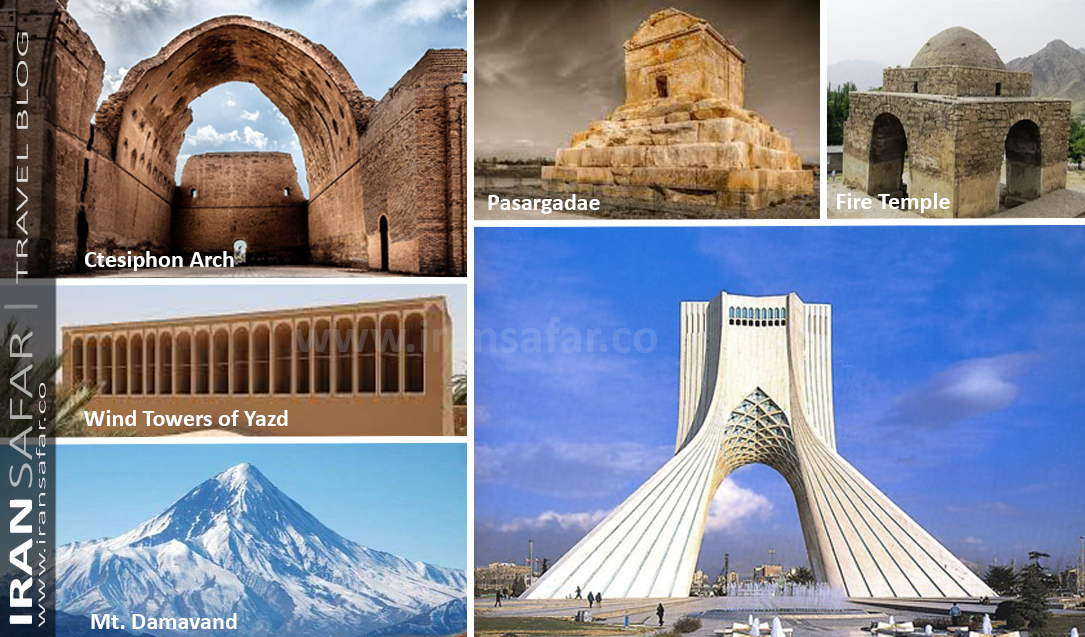 Azadi Tower’s Elements & Symbols
Azadi Tower’s Elements & Symbols
Also Read : Niavaran Palace Complex
The Azadi Square
This effect can also be seen in the design of the oval area of Azadi Square; For example, the motifs and gardens of the square and the shape of their juxtaposition evoke the interior of the dome of Sheikh Lotfollah Mosque in Isfahan, and the water features and fountains are similar to the gardens of Shiraz.
In terms of architecture, this tower is designed with complex geometric plans and a combination of Islamic, Achaemenid and Sasanian architecture.
Observation Deck
Ascending the tower’s spiraling staircase or using the elevator, visitors reach the observation deck, which offers a mesmerizing view of Tehran and its sprawling cityscape. From this vantage point, one can witness the city’s vibrant energy and marvel at its blend of modernity and tradition.
Cultural Exhibitions
Azadi Tower serves as a cultural hub, hosting a range of exhibitions and events throughout the year. These exhibitions delve into the depth of Iran’s rich heritage, showcasing ancient artifacts, traditional crafts, and contemporary artworks. Visitors have the opportunity to immerse themselves in Iran’s vibrant cultural tapestry and gain a deeper understanding of the nation’s multifaceted identity.
The Designer of Azadi Tower
You may be a little surprised to read this text; Because in some sources it is narrated that the last Queen of Iran, Farah Diba, presented the design of the Azadi tower, however, this is a historical mistake.The design of Azadi Tower and Square was chosen 5 years before its inauguration and selected among the designs of many architects. 24-year-old Hossein Amanat, who at that time had just graduated from Tehran University, according to himself, by looking at “what happened to Iran throughout history and thinking about the country’s future” designed the building, which now and after 50 years is an important part And it is undeniable from the identity of the city of Tehran.
In the opening ceremony of this tower, the first charter of human rights was unveiled, which was written by Cyrus, the Achaemenid king.
The design of this 45-meter tower is an abstract of different historical periods of Iran, and there are symbols and signs of all these periods in this design.
Read : Iran Travel Tips 2023
A Gateway to Modernity
The construction of Azadi Tower started in 1969 and lasted for 28 months. Finally, it was inaugurated in 1971, with the presence of more than 3,000 domestic and foreign guests. At the beginning of the opening ceremony, the 2,500 year old charter of Cyrus the Great was unveiled. By doing this, they intended to show that day as a turning point and a link between ancient Iran and future developments in the country.
Fortunately, the tower still remains intact and is considered one of the most important symbols of the capital. As mentioned in the beginning of the article, the tower is not limited to the main structure of the tower and has many parts. However, all parts of Azadi Tower were not built at once in 1350 and its construction dates back to history. In 1353, that is, 3 years after the completion of the Azadi Tower project, the government decided to create a cultural space at a depth of 15 meters in this tower.
Cultural Significance of Azadi Tower
Azadi Tower represents more than just an architectural marvel. It has deep-rooted symbolism and carries significant importance for the culture of Iran and Iranian people. The tower’s design embodies the concept of unity and harmony, drawing inspiration from the iconic Cyrus Cylinder, an ancient artifact that symbolizes human rights and the rule of law. Azadi Tower stands as a proud testament to Iran’s rich cultural heritage and its people’s resilience.
Azadi Tower holds a special place in the hearts of Iranians, evoking a sense of national pride and unity. Its prominent location and distinctive silhouette make it a recognizable landmark not just within Tehran but also on the global stage. It has become an enduring symbol of Iranian pride, resilience, and the pursuit of freedom.
Azadi tower & Revolution 1979
This tower was originally called Shahyad Tower, meaning the memorial monument of the Shah. After the revolution of 1979, because of the important role this square had in protest gatherings, it was called Azadi tower – meaning freedom.
After the Pahlavi monarchy ended, the maintenance responsibility was handed over to the the Ministry of Culture and currently, it is in the hands of an NGO called Rudaki Foundation. Unfortunately, since 2013, the risk of destruction of the Azadi Tower threatens, and the construction of a mosque in the northwest part of the tower has distorted its visual appearance.
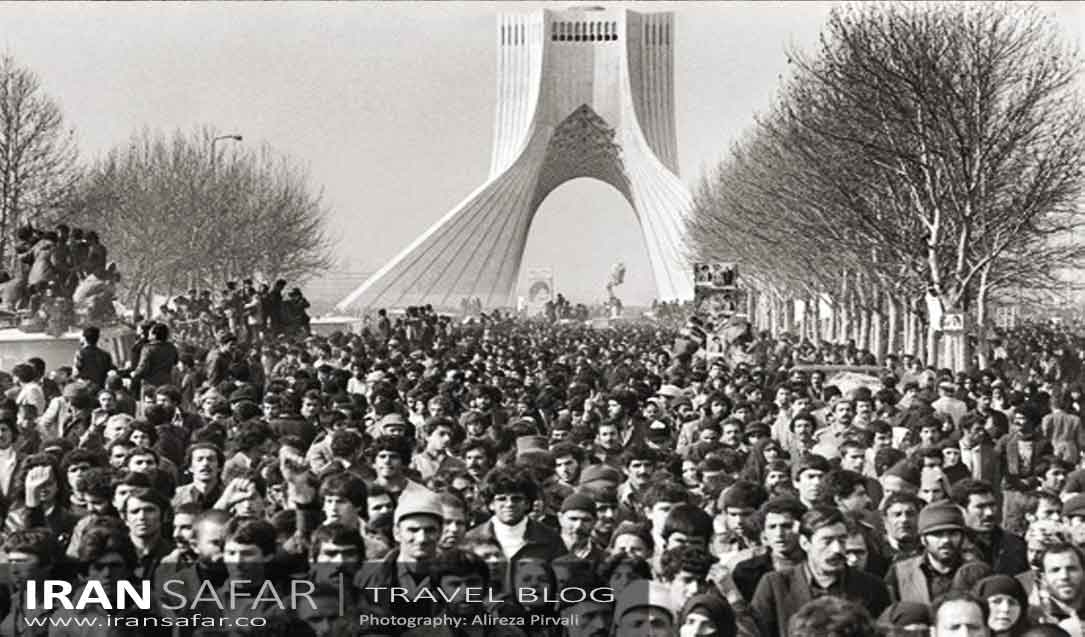 Iran Revolotion 1979, Azadi Tower, Tehran
Iran Revolotion 1979, Azadi Tower, Tehran
FAQs

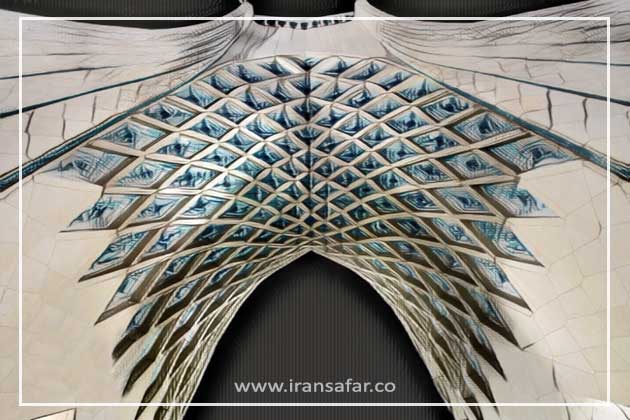
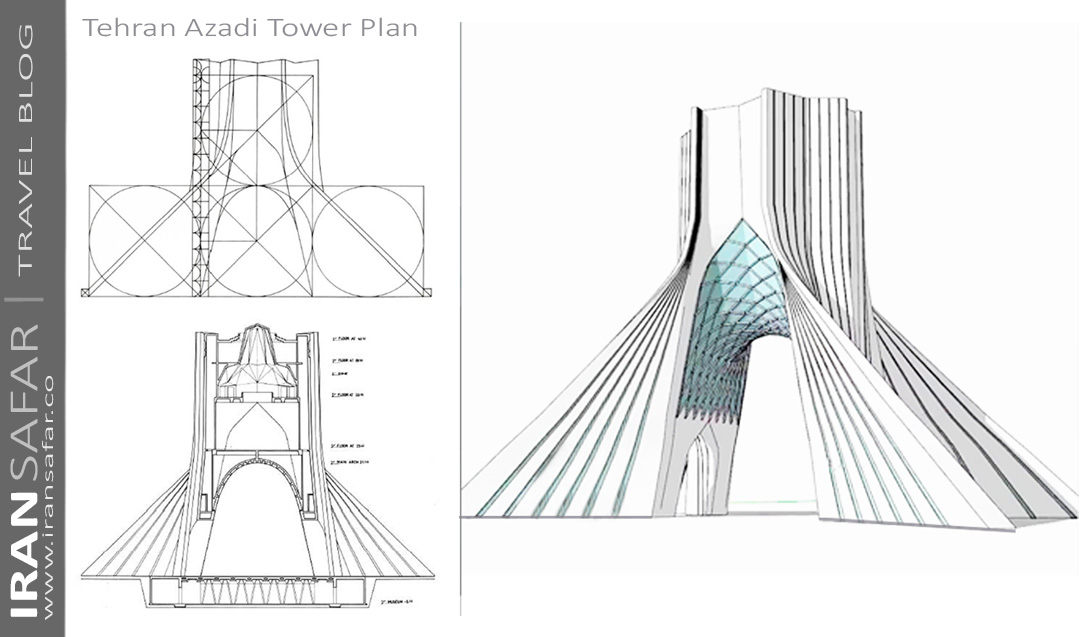

Comment (0)